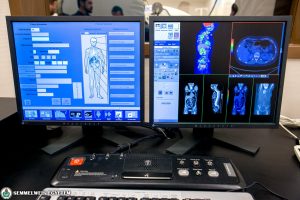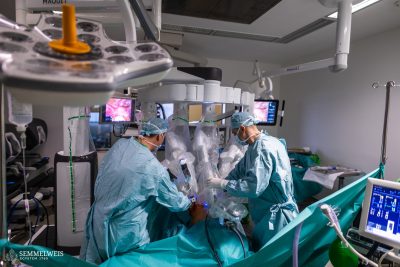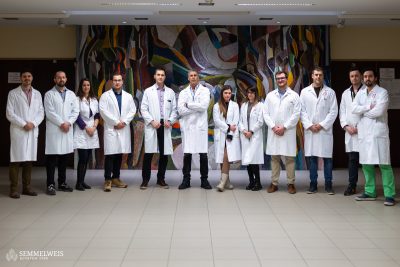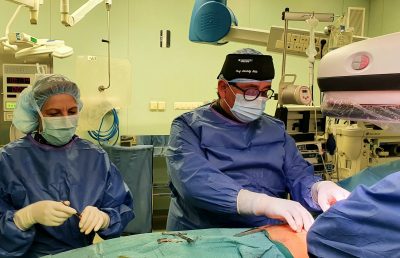A world-class nanoScan SPECT-CT will be procured by Semmelweis University with the use of a recently acquired fund. The project “The study of the endothelial impact and the in vivo distribution of nanoparticles with multimodal imaging systems” acquired a grant of 295 million forints within the framework of the tender VEKOP-2.3.3-15 – Strengthening research infrastructure – internationalisation and networking. The research based on the nanoScan SPECT-CT combined with a photoacoustic imaging system is lead by the Department of Biophysics and Radiation Biology and involves the Department of Clinical Experimental Research, the Department of Pharmaceutics, the Department of Pathophysiology and the Centre for Nanomedicine Research and Education until the end of August 2018.
 Endeavours aiming at the installation and further development of imaging technologies have always been a priority at Semmelweis University, especially those enabling the study of living organisms, tissues and cells. This nanoScan SPECT-CT, which is combined with a photoacoustic system will play an important part in world-class research and developmental projects in medical biology. The objective of the project is to study the distribution of nanoparticles or that of embedded intelligent (controlled or programmed) substances capable of detachment in the organism and the physiological changes triggered by them. These will contribute to the greater understanding of physiological processes, to the mapping of the pathophysiological background of diseases, which may directly aid the clinical process of diagnostics and healing and could result in the development of new therapeutic and diagnostic technologies.
Endeavours aiming at the installation and further development of imaging technologies have always been a priority at Semmelweis University, especially those enabling the study of living organisms, tissues and cells. This nanoScan SPECT-CT, which is combined with a photoacoustic system will play an important part in world-class research and developmental projects in medical biology. The objective of the project is to study the distribution of nanoparticles or that of embedded intelligent (controlled or programmed) substances capable of detachment in the organism and the physiological changes triggered by them. These will contribute to the greater understanding of physiological processes, to the mapping of the pathophysiological background of diseases, which may directly aid the clinical process of diagnostics and healing and could result in the development of new therapeutic and diagnostic technologies.
With the help of the new research infrastructure provided by the nanoScan SPECT-CT combined with the photoacoustic system, the foundations of systems biology based medicine (the characteristics of the systemic operation of molecules, cells, tissues and the organism itself) may be laid down and new therapeutic drug carriers may be developed. The new equipment enables the in vivo quantification of the pharmacokinetics of nanoparticles developed for diagnostic and therapeutic purposes. With the application of an appropriate marking system, the temporal and physical distribution of nanoparticles and substances carried by them in the living organism can be followed and understood. Thus, the new research infrastructure provided by the nanoScan SPECT-CT combined with the photoacoustic system will greatly contribute to the improvement of the general health of the public and will help more successfully overcome the challenges of an aging society. Finally, it will make Semmelweis University become a member of EuroBioimaging, a cooperation including 28 European centres of imaging, thus providing Hungarian researchers access to the European Union’s central imaging infrastructure.
Zoltán Vereckei
Photo (illustration): Attila Kovács – Semmelweis University
Translation: Ágnes Raubinek


